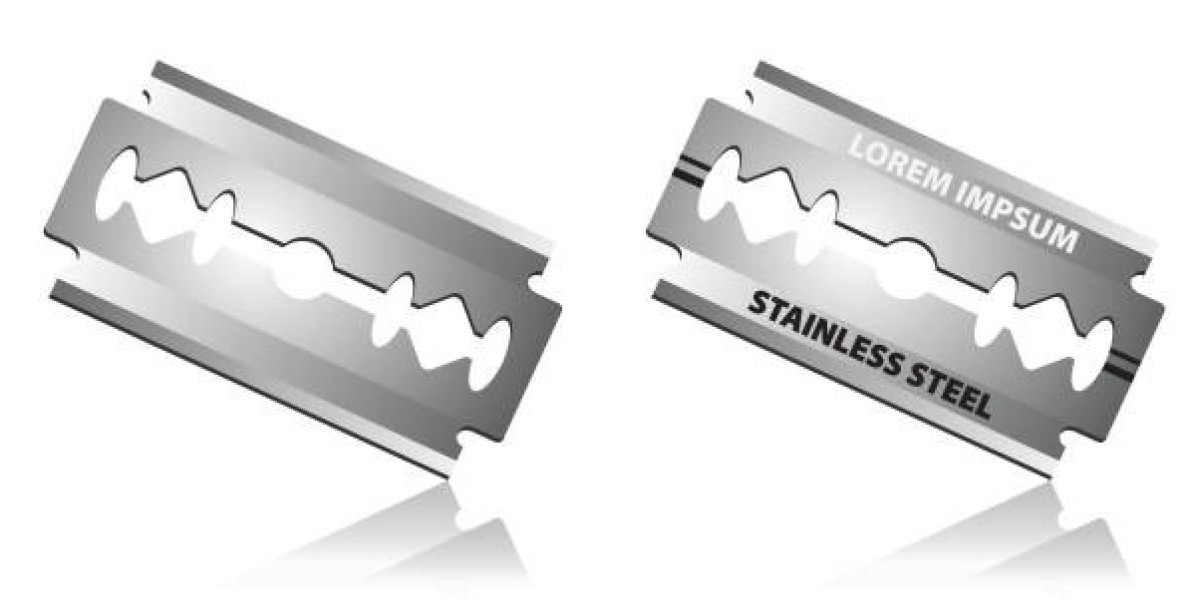Stainless blades have become an indispensable part of our daily lives, serving a multitude of purposes from kitchen knives to surgical instruments and beyond. The unique properties of stainless steel make it ideal for crafting blades that are not only durable and resistant to corrosion but also capable of retaining sharpness over extended periods. Let's delve deeper into what makes stainless blades so versatile and why they are preferred in various applications.
What Makes Stainless Steel Ideal for Blades?
Composition and Properties
Stainless steel is an alloy composed primarily of iron, with a minimum of 10.5% chromium content by mass. This chromium content is what gives stainless steel its corrosion-resistant properties by forming a passive oxide layer on the surface. In addition to chromium, other elements such as nickel, molybdenum, and carbon may be added to enhance specific properties like hardness, toughness, and edge retention. These alloys collectively contribute to making stainless blades resilient against rust, stains, and wear, which is crucial for maintaining their effectiveness and longevity.
Durability and Strength
One of the key reasons stainless steel blades are preferred over other materials is their exceptional durability. They can withstand the rigors of daily use without losing their edge or succumbing to rust, even when exposed to moisture or acidic substances. This durability makes them suitable for both indoor and outdoor applications, ranging from culinary tasks to survival knives used in harsh environmental conditions.
Sharpness Retention
Another significant advantage of stainless steel blades is their ability to retain sharpness over time. This characteristic is especially important for tasks that require precise cutting, such as surgery or culinary arts. Stainless blades can be honed to a fine edge and maintain it through repeated use, thanks to the hardness imparted by the alloy composition. This sharpness retention not only improves efficiency but also reduces the need for frequent sharpening, making stainless blades a practical choice for professionals and enthusiasts alike.
Applications of Stainless Blades
Kitchen Knives
In the culinary world, stainless steel blades are ubiquitous due to their hygienic properties and ease of maintenance. They are resistant to food acids and stains, making them ideal for preparing various ingredients without tainting flavors or risking contamination. From chef's knives to paring knives, stainless blades offer reliability and precision, enhancing the cooking experience for chefs and home cooks alike.
Medical and Surgical Instruments
In the medical field, stainless blades play a critical role in surgical instruments. They are non-reactive with bodily fluids and tissues, reducing the risk of infection during procedures. The durability of stainless steel ensures that surgical instruments can withstand repeated sterilization processes without compromising their structural integrity or sharpness, ensuring optimal performance in clinical settings.
Outdoor and Tactical Tools
For outdoor enthusiasts and professionals in fields such as hunting, fishing, and survival, stainless steel blades are favored for their reliability in challenging environments. These blades can endure exposure to moisture, saltwater, and varying temperatures without rusting or corroding. Whether it's filleting a fish or crafting a makeshift shelter, stainless blades provide the necessary durability and cutting power needed in outdoor activities.
Choosing the Right Stainless Blade
Factors to Consider
When selecting a stainless steel blade, several factors should be taken into account to ensure it meets specific requirements:
- Composition: Different stainless steel alloys offer varying degrees of hardness, toughness, and corrosion resistance. Choose an alloy that aligns with the intended use of the blade.
- Edge Geometry: The shape and grind of the blade's edge influence its cutting performance. Consider whether a straight edge, serrated edge, or a combination (such as partially serrated) best suits your needs.
- Handle Design: Comfort and ergonomics are crucial for prolonged use. Look for a handle material and design that provides a secure grip and minimizes fatigue.
- Maintenance: While stainless blades are low-maintenance compared to carbon steel, proper care is still essential to maximize longevity. Regular cleaning, drying, and occasional sharpening will ensure your blade performs optimally over time.
Conclusion
Stainless blades are more than just tools; they are precision instruments designed to enhance efficiency, safety, and enjoyment in various aspects of life. Whether you're preparing a gourmet meal, performing delicate surgery, or exploring the great outdoors, the reliability and durability of stainless steel make it a top choice for professionals and enthusiasts alike. By understanding the unique properties and applications of stainless blades, you can make informed decisions when selecting the right tool for your specific needs.


